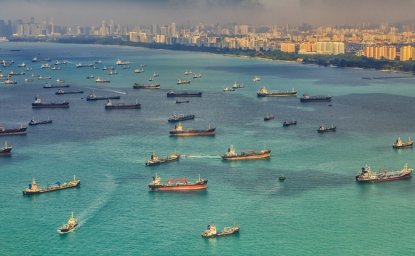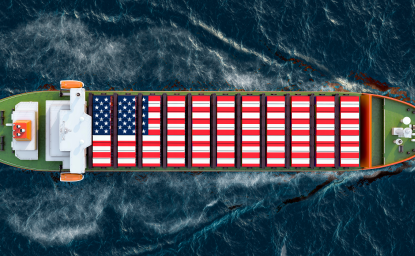Introduction
The Trans-Pacific Partnership (TPP) countries—Australia, Brunei Darussalam, Canada, Chile, Japan, Malaysia, Mexico, New Zealand, Peru, Singapore, the United States, and Vietnam— claim 40 percent of the world’s gross domestic product and conduct 26 percent of global trade. The impact of the TPP differs depending on the individual country, but given the technical complexity and massive size of the agreement (30 chapters and more than 5,000 pages) the period immediately following negotiations is open season for highly biased interpretations. Lack of accurate information is particularly dangerous because the U.S. Congress is now considering whether the TPP is worth becoming the template for future U.S. trade policy and a key element of the U.S. pivot to Asia.
Depending on the source, the TPP has been praised (or panned) as the best (or worst) trade agreement ever negotiated and is regarded as radically different (or nothing new). Which is it? Superlatives aside, there is something in the TPP for everyone—critics and fans alike. The following overview is a guide to what is and is not new in the TPP, and what is next for the United States as a potential TPP participant. It also provides a context for the more specific analyses provided by Wilson scholars Meg Lundsager, Shihoko Goto, and Christopher Wilson.
What's Key
American Leadership
Economics aside, geopolitics provides the most important reason for the U.S. Congress to ratify the TPP. Passage of the TPP will demonstrate America’s commitment to Asia, American leadership, and America’s ability to accomplish big things. As President Barack Obama stated in a November 13 address to national security experts, “If we fail to get the Trans-Pacific Partnership done, if we do not create the architecture for high-standards trade and commerce in this region, then that void will be filled by China, it will be filled by our economic competitors. They will make the rules, and those rules will not be to our advantage.”
What's New
1. Opening New and Complementary Markets
The United States and its G7 trading partners—Canada, France, Germany, Italy, Japan, and the United Kingdom—are cursed by too much similarity: wealthy, aging populations with high levels of technology; similar export mixes; high labor costs; and low levels of growth. The emerging markets in Asia and Latin America in the TPP have young populations, lower-cost manufacturing, growth rates well ahead of the G7 average, and emerging consumer classes demanding the brands and technologies that the United States produces.
Not all TPP parties are emerging markets. Japan brings the benefits of being the third-largest economy in the world (the TPP is its first serious trade liberalization agreement since the WTO). Australia and New Zealand, also developed country markets, will help the United States to diversify its trade base and are important allies in the Asia Pacific region.
Canada and Mexico, while not new markets, share closely integrated manufacturing supply chains with the United States as a result of the NAFTA. The aggregation of North American skills and resources helps U.S. firms to operate more competitively in the world. What is new is that the TPP helps to update NAFTA and advances the unfinished WTO agenda. Although countries within the TPP may be preoccupied with its shortcomings, countries outside the agreement have larger worries, as Christopher Wilson notes, because they risk losing out on market access and investment opportunities.
2. Harnessing the Power of New Technologies
The TPP contains important new measures on electronic commerce that attempt to keep countries from blocking cross-border information flows. The TPP also encourages innovation at the front lines of medical research by providing additional protections to developers of biologic drugs (gene therapies). Biologic drugs are much more costly to develop than conventional drugs and, under the TPP, will be given longer periods of protection. A vocal anti-trade lobby is attempting to link the TPP to higher drug costs and/or reduced access for developing countries, but these claims have little basis in fact since the TPP gives developing countries longer phase-in times for compliance.
Strengthened intellectual property (IP) rights in the TPP will increase return on investment for innovators, promote research and development, and attract venture capital from outside the region. The TPP negotiators struggled to balance the innovator’s right to a return on investment, the public’s right to access innovative content, and the interests of future innovators. One U.S. “win” that may prove problematic for other TPP partners is the increase in duration of copyright from 50 years beyond the life of the creator to 70 years. The U.S. is home to many of the world’s most recognizable IP rights holders, such as Disney, while most TPP partners are primarily IP consumers.
3. Ensuring That State-Owned Enterprises (SOEs) Follow the Rules of Competition
American companies accustomed to operating within a free market system are concerned that SOEs will use the heft of government to manipulate markets and squeeze out competition. The TPP requires SOEs to follow recognized rules of transparency and competition. In the TPP, most of the SOE concerns were focused on Vietnam, but the rules established in one trade agreement have set a precedent for future ones. The disciplines worked out in the TPP could help constrain other countries’ SOEs, including China’s, if these countries undertake agreements with TPP members.
A vocal anti-trade lobby is attempting to link the TPP to higher drug costs and/or reduced access for developing countries, but these claims have little basis in fact since the TPP gives developing countries longer phase-in times for compliance.
4. Taking First Steps against Currency Manipulation
The TPP negotiations marked one of the first serious attempts to curb the trade-distorting impacts of currency manipulation. The TPP itself does not cover currency manipulation, but a side agreement increases transparency and reporting requirements. These measures, as Lundsager notes, will make it “readily apparent when a country is directly trying to influence market prices.” Nevertheless, the absence of penalties for violators has disappointed many U.S. legislators whose support for the TPP was contingent on hard-hitting measures against currency violators. Convincing them that the TPP will effectively discourage currency manipulation with be important to securing broad support for the final deal.
5. Pivoting to Asia
Although the TPP affirms America’s commitment to Asia, it is not intended to contain China or any other Asian power. Other countries, including China, are free to join the TPP. Although China initially expressed concern about the TPP negotiations, it has since become an active observer. As Goto notes, “reformists in Beijing are considering joining the pact too, given the economic cost of remaining outside of its framework.”
Meanwhile, China is leading another set of negotiations, called the Regional Comprehensive Economic Partnership (RCEP), that is expected to adopt many TPP provisions. Rather than reflecting a struggle for economic hegemony, the RCEP and TPP dynamics might help to align the commercial policies of the world’s two largest economies on separate but converging tracks.
What's Not New
1. A Consistent, WTO-based Framework
The international trade “rules of the road” are surprisingly consistent across agreements. The U.S.-Colombia Free Trade Agreement looks pretty similar to the Canada-Ukraine agreement, for example, because all modern trade agreements are based on a template worked out through the 1948 General Agreement on Tariffs and Trade (GATT) and expanded through the 1994 World Trade Organization (WTO) agreements. The principles of nondiscrimination and transparency are applied through widely accepted tools such as gradual liberalization and reciprocity. Generally, the rules that apply to one will apply to all, even though governments lobby for special treatment for their sensitive economic sectors. Agreements are enforced mostly through peer pressure, accompanied by a dispute settlement system that seeks, imperfectly, to be unbiased. The TPP is consistent with antecedent agreements such as the North American Free Trade Agreement (NAFTA) and the South Korea-U.S. (KORUS) agreement.
Convincing them that the TPP will effectively discourage currency manipulation will be important to securing broad support for the final deal.
2. A Balance between Winners and Losers
The purpose of a trade agreement is to remove unnecessary impediments between buyers and sellers. Because, as Adam Smith reminded us in 1776, not everyone does everything equally well, protectionism and import barriers are often created to shelter weaker parts of the economy. When one country can produce something more efficiently than another (such as Vietnam compared with the United States in producing textiles), producers in the less-efficient country lobby their own government to keep the market closed to foreign competition. But a closed market may be pried open if another, more efficient industry’s lobbyists convince policymakers that their need to export outweighs, or is at least equally important as, the less efficient industry’s need to protect itself (such as the U.S. high-tech exporters, for whom Vietnam is a lucrative market).
The TPP is a balancing act between preserving jobs in less competitive sectors and doing what it takes to gain new jobs in more competitive sectors. There continues to be a particular concern about what the TPP implies for manufacturing. For the United States, the TPP will accelerate losses in a number of industries because other countries with lower labor costs can produce goods more cheaply. The auto and auto parts industries could be vulnerable to such losses. Offsetting this downside are requirements for developing countries to meet stiffer environment and labor rules. With large and persistent deficits in advanced technology, the United States is not keeping pace with global competitors. Manufacturing is important for employment, forms part of the U.S. innovation system, and is a big part of how America and other countries pay their way in the world.
North America’s comparative advantage lies with advanced skills and technologies—for example, advanced manufacturing, 3-D printing, and big data analytics. Thus, the TPP arrangements are complicated attempts to preserve market share at the more vulnerable end of the supply chain while building export opportunities for higher-skill activities that are better positioned for growth.
3. An Imperfect Attempt to Deal with Nontraditional Issues
Trade agreements are somewhat unique among international institutions because they have relatively effective enforcement mechanisms rooted in the threat of market closures and sanctions. Other issues may get added to trade agreements because of the agreements’ enforcement capabilities. Labor and environmental practices and controls over subsidies, currency manipulation, and state-owned enterprises (SOEs) have been prominent nontraditional issues raised during the TPP negotiations. The challenge with including these new issue areas in trade agreements is that most of the issues cannot be treated like a tariff (i.e., eliminated or progressively reduced over time). Because nontraditional issues are difficult to quantify and regulators have little experience with them, they first appear in trade agreements as loosely drawn, best-efforts commitments that may become better targeted and more effective in later agreements.
On environment and labor, the TPP negotiators learned from the WTO and the North American Free Trade Agreement (NAFTA) and added binding mechanisms to punish noncompliance. (The WTO and NAFTA agreements had weak penalties for violations.) However, traders and negotiators have had more than 20 years since NAFTA to refine environment and labor commitments. Newer measures to deal with currency manipulation (see Meg Lundsager’s essay) and SOEs are still in the prototype phase; the TPP handled them in side agreements rather than in the main text, which angered members of Congress who demanded that the TPP achieve a “high level of ambition” on these issues. More effective rules may be put in place in future agreements. For now, lower levels of commitment (which can be increased later) should encourage compliance with, rather than defection from, the international trading system.
4. A Hostage Drama
At the end of every negotiation, there are accusations that American interests have been held hostage to some group of influencers, usually big business or foreign governments. Those on the losing end are apt to cry foul at efforts to wind down protections for less competitive sectors and ramp up opportunities for more competitive ones. Admittedly, some sectors have more effective and better-funded lobbying machinery than others, but governments try to achieve balanced agreements that please more voters than they irritate in order to sell the agreements politically.
The TPP is attracting criticism from labor unions, manufacturing and agricultural sectors that are facing more losses than wins. Other sectors, big pharma among them, made some gains from the TPP but did not get everything they wanted, and are making their criticisms heard. However, unhappiness with certain aspects of an agreement does not require shelving the entire product, because compensatory mechanisms and transitional supports can be worked out. And reopening or renegotiating an agreement is akin to removing and replacing the pieces in a tower of blocks—it is possible but not recommended since the negotiating parties will never duplicate the political will and momentum they had when staring down a deadline. Renegotiating risks not only producing an inferior outcome, it also puts the whole agreement in jeopardy since all changes have to be agreed to by everyone.
What's Next
The TPP breaks new ground on important economic issues that previous trade agreements have not addressed and provides a template for 21st-century trade agreements. In trading areas where the United States is losing its competitive advantage to the forces of globalization, the TPP provides a buffer during the transition. In new sectors where the United States has growth potential, the TPP improves the conditions of competition, encourages innovation and minimizes unfair barriers.
Perfection is never an option in trade agreements. Good-enough is the best that can be achieved. With the WTO in hiatus, “megaregional” agreements like the TPP and the Transatlantic Trade and Investment Partnership between the European Union and the United States are setting the standards for global trade. Abandoning these projects will not stop globalization; it just means that others will be able to set the rules. Those in the United States who would reject the TPP do so based on two assumptions. The first is that the United States will have a second chance at negotiations under a new administration, and the second is that the United States’ global trading partners will wait patiently for new negotiations to occur. These are not reasonable assumptions. A more likely scenario is that that other mega-regional agreements, including China’s RCEP, will rise to fill the void, leaving the United State on the sidelines.
The opinions expressed here are solely those of the authors.






